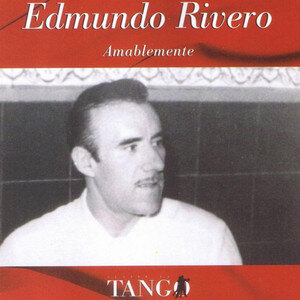The term "Definitive Version" is frequently used among audiophiles to describe the best available and decisive version of historical transfers. In the classical music domain, various small companies are widely known for their establishment in the industry, such as Pearl and Biddulph in the 78rpm domain, Grandslam in reel-to-reel tape transfers, the "new-fashion" Pristine Classical, etc. The key difference between them and the most popular official releases is that they cater specifically to the ears of audiophiles and professionals.
A Glance at Recording Technology
Tango DJs aim at the best-quality output of tango music. Although the recording history of tango expands from the beginning of last century until now, the period which dancers and DJs are interested in basically stays within 1920-60s, which corresponds to three different eras in the recording history: Electric Era (1926-48), Vinyl Era (1949-1950s) and Magnetic Era (1950s-1970s). In order to get the best sound quality, we need to know how the records are made. The production line of records made during the Electric Era (pre-1948) was:
Original Performance – (Wax/Lacquer Disc) - Master Record – (Stamper Disc) – 78rpm Shellac Standard Play Records
Conventionally, the closer the generation of the source is to the original performance, the better material it is for the restoration task. Since the original performances are unrepeatable (unless a time machine is invented) and wax/lacquer/stamper discs are not durable, the ideal source would be the metal Master Record. Unfortunately, none of the recording companies have kept the masters until now, as they are heavy and take up too much inventory space. Due to their lack of commercial value, they had to be massively destroyed. Only 78rpms in their best condition (with exceptions for some LPs directly made from the Master SP Record) are the best we can have.
Records made during the Vinyl Era (1949-50s) went through a similar process, and the story was quite similar. The original first/early batch of LP/EP releases are the optimal choices. It is noteworthy that 78rpms were also produced during this era for commercial purposes, the masters of which were made by dubbing from the LP/EP masters.
Original Performances – Master Record (LP/EP) – LP/EP Vinyl Records, or
Original Performances – Master Record (LP/EP) – Master Record (SP) – 78rpm Shellac Standard Play Records
The 78rpms from this era are not only later-generation products but also made from inferior materials. They will be chosen only when vinyls are difficult to find.
Music during the Magnetic Era (1950s+) was recorded onto master tapes, most of which still sit in the vaults of recording companies.
Consequently, the best sources for sound engineers nowadays are shellac records (Electric Era and before), first-print vinyls (Vinyl Era), and reel-to-reel master tapes (Magnetic Era). In cases where master tapes were lost or became unavailable before the advent of CDs, the best-condition reel-to-reel tape copy of the master tape or even the first-print LPs in good condition will be a suboptimal choice.
Tango Music Production Facts
In the tango record industry, all early labels, including Brunswick, Electra, Columbia, Víctor, and Odeón, started by making shellacs. Columbia was the first to apply 33rpm LP recording technology into commercial production since 1945 (with Nathan Milstein’s Mendelssohn Concerto with Bruno Walter and NYPO), but they were not in the tango business during the 1940s. Odeón and Víctor each started with LP and EP vinyl production in 1949, and Víctor soon paralleled their own LP production line in 1950 (the exact situation in Argentina needs more evidence).
Music Hall ambitiously opened its production line in 1951 with the latest reel-to-reel magnetic tape technology, followed by Odeón and Víctor soon after. T.K. started in 1951, possibly with the traditional 78rpm SP method, then upgraded to reel-to-reel tape the following year. Each company had its own hero to taste the tomato:
Víctor:
First Vinyl (EP) recording session: Alfredo Gobbi 1949.03.24, Orlando Goñi/El pollero
First reel-to-reel tape recording session: Alfredo Gobbi 1953.10.27, Si sos brujo/Por eso canto así
Odeón:
First Vinyl (LP) recording session: Francisco Canaro, 1949.02.17, Ojos Negros/Re Fa Si
First reel-to-reel tape recording session: Francisco Canaro, 1951.11.26, Inspiracion, Corazón de Oro, etc.
Music Hall:
First reel-to-reel tape recording session: Carlos Di Sarli, 1951.05.09, A la gran muñeca/El Incendio/El Opio/Germaine
T.K.:
First reel-to-reel tape recording session: Aníbal Troilo, 1952.03.20, Buenos Aires/Contratiempo
By “first” I simply mean the earliest I can confirm. There could be experimental recordings prior to these dates, and there were many recordings sticking to the traditional process even after these dates. On all accounts, with this guideline provided, we can draft a map for hunting the “definitive versions”.
In reality, a huge part of tango music in CD/digital formats did not go through the ideal process. Sound engineers just grab the nearest at hand to avoid the unbearable amount of human labor. As Tango DJs, we have no choice but patiently compare different tracks from various albums. These are some important factors to take into consideration:
Equalization and De-Emphasis Curves: the RIAA (Recording Industry Association of America) curve was widely used on LPs after 1955. Nevertheless, in Europe some were using the CCIR standard even in the early 1960s, and it took a great effort before the common ground was reached. In Argentina, there was clearly a struggle between standards during that period. The situation in the Electrical Era on shellac records was even more chaotic, which means there were hardly any traceable patterns of the pre-emphasis curves. Apparently, many modern sound engineers are not aware of it or choose to ignore this. Meanwhile, some have succumbed to their incapability and just do whatever seems ok to their ears.
Sound Effects: discreet use of modern sound repair techniques can greatly contribute to the result, while the principle here is the less the better. Intact transfers which read the very original performance carved into the records are the ultimate pursuit. In many cases, reverberation and exciter were excessively used.
Clipping: a distortion of signal when the volume is too high that it exceeds the maximum level during the digitalization progress.
Noise Reduction: no noise reduction can be achieved without sacrificing the music. It is like separating milk and coffee from a glass of latte or getting rid of the water from a fully absorbed sponge without leaving holes. A mild amount of background noise is indiscernible when DJing in a spacious venue where speakers are hung high above or placed afar. However, in some tiny indoor places where speakers could be just inches away to dancers and the atmosphere is more intimate, some tracks could become extremely noisy. The better solution is to find better transfers from better sources. That said, we can expect a revolution of noise reduction technique led by the AI technology in the near future.
Speed Issue: A big problem that existed throughout the shellac, vinyl and tape eras, which was not entirely solved until the 1960s.
Tango Music Collection Guide List
The “Best Version” column in the lists simply refers to transfers of first-generation sources or, in fewer cases, decent transfers from second-generation sources. The lists are not “definitive” and I will keep updating them. I am always glad to discuss about it.
1) Carlos Di Sarli in the Post-78rpm Era
Building a convincing collection of Carlos Di Sarli’s music legacy is challenging. The useful albums are extremely hard to find and could be very expensive. Moreover, achieving a playable result with the tracks requires professional ears.
Must-haves (14 discs):
Orfeón 13372 Lo Mejor de Carlos Di Sarli (Orfeon L)
Amazing transfers of El recodo, El pollito, etc.
Music Hall 10018, Milonguero Viejo
Probably the only reel-to-reel tape transfers before its mysterious disappearance, whereas the result is a pain in the ass. The low-pass and high-pass filters destroyed all the right frequencies. It requires top-level restoration skills to make them shine.
CTA 517-519, Carlos Di Sarli Vol.17-19
Objective transfers by Akihito Baba san from original Japanese 7-inch vinyls starring the period of 1952-54, many of which are the only available choices, though a bunch of minor speed/filter glitches need to be fixed.
Sentir El Tango/Altaya 31, Carlos Di Sarli - Bahía Blanca (AS 31)
All you need for the ultimate instrumental glory of Di Sarli in Philips. It is a reissue of the impossible-to-find “El Señor Del Tango” album that belongs to the Polydor Escenario series.
Orfeón 13361, El Señor del Tango (Orfeon E)
Some very supreme tape transfers such as Clavel del aire, A la luz del candil, etc.
Grafisound 15208, A La Gran Muñeca
Decent transfers from the first generation 7-inch LPs such as El ciruja, El cabure, etc.
RCA Victor 100 años, Carlos Di Sarli
A beautifully done official album of RCA to celebrate RCA's centennial. Very slight noise reduction and some other stunts were applied. You will also see the speed issue when the same tracks are compared with the EU series - this supports the fact that the problem exists in the master tapes.
Sentir El Tango/Altaya 62, Edmundo Rivero - Amablemente (AS 62)
This album contains two of four Di Sarli/Rivero tracks. Rivero’s voice was dubbed onto the instrumentals after the Ciego’s death.
Below four albums of Euro Records present decent reel-to-reel master tape transfers of Di Sarli’s 1954-58 Victor era with a few substitutes from LP transfers. Some tracks have speed issues (e.g. Milonguero Viejo, El Ingeniero, La Morocha)
EU-16023 Archivo RCA, Carlos Di Sarli con Jorge Duran y Roberto Florio
EU-16019 Archivo RCA, Dos maestros, dos estilos - Carlos Di Sarli | Juan D’Arienzo
EU-16010 Archivo RCA, Carlos Di Sarli y sus cantores
EU-16028 Archivo RCA, Carlos Di Sarli
Could-haves:
For some specific tunes, you have no better choices than these albums below:
TangoTunes, Carlos Di Sarli Music Hall
BM Japan Carlos Di Sarl R32P-1102
Providing the best (tape) transfers of some tracks in the 1950s. Some EQ restoration needed.
BMG 16108, Todo Di Sarli de FM Tango para usted | Instrumental Vol. 1
Polydor Escenario, Edmundo Rivero - Cuando Me Entres A Fallar (PL Escenario)
Providing the third Rivero/Di Sarli track.
Siglo Del Tango Argentino 10 CDs (STA)
Providing the best (tape) transfers of some tracks in the 1950s. Some EQ restoration needed.
CTA 516/520, Carlos Di Sarli Vol.16/20
Grafisound 15230, Carlos Di Sarli y Su Orquesta
Polydor Escenario, Carlos Di Sarli - El Senor del Tango
Can replace AS 31 if you have this one.
The Comparison List
Tango Instrumental 1951-1954 (Music Hall)
Tango Instrumental 1954-58 (RCA, Phillips)
Mario Pomar 1951-55 (Music Hall, RCA)
Oscar Serpa 1952-55 (Music Hall, RCA)
Jorge Duran y Edmundo Rivero 1956-58 (RCA, Phillips)
Roberto Florio 1956-58 (RCA)
Milonga, Vals and Other Singers (Music Hall, RCA, Phillips)





























